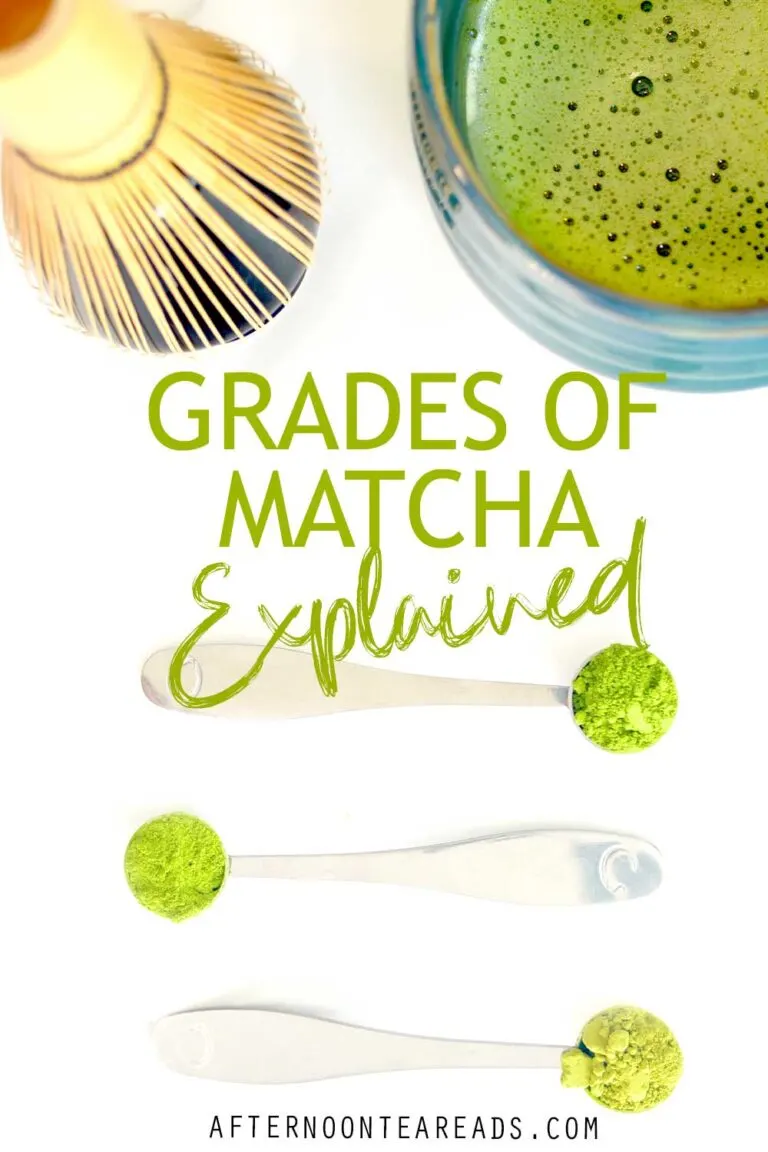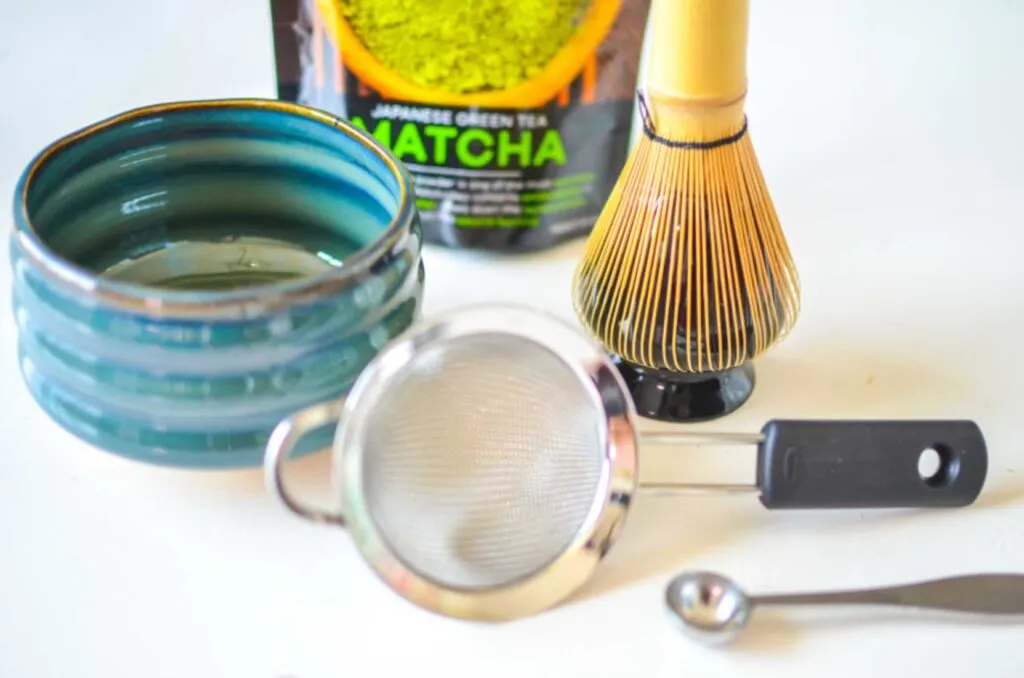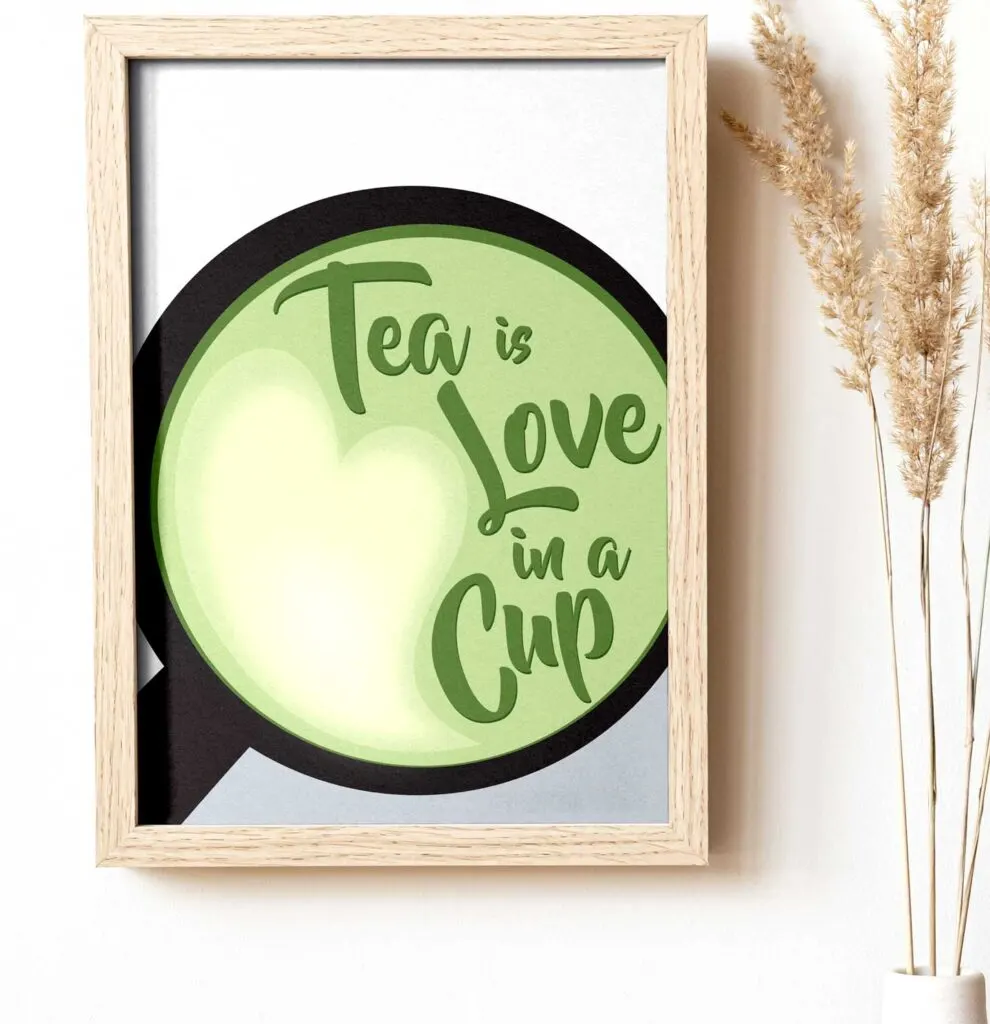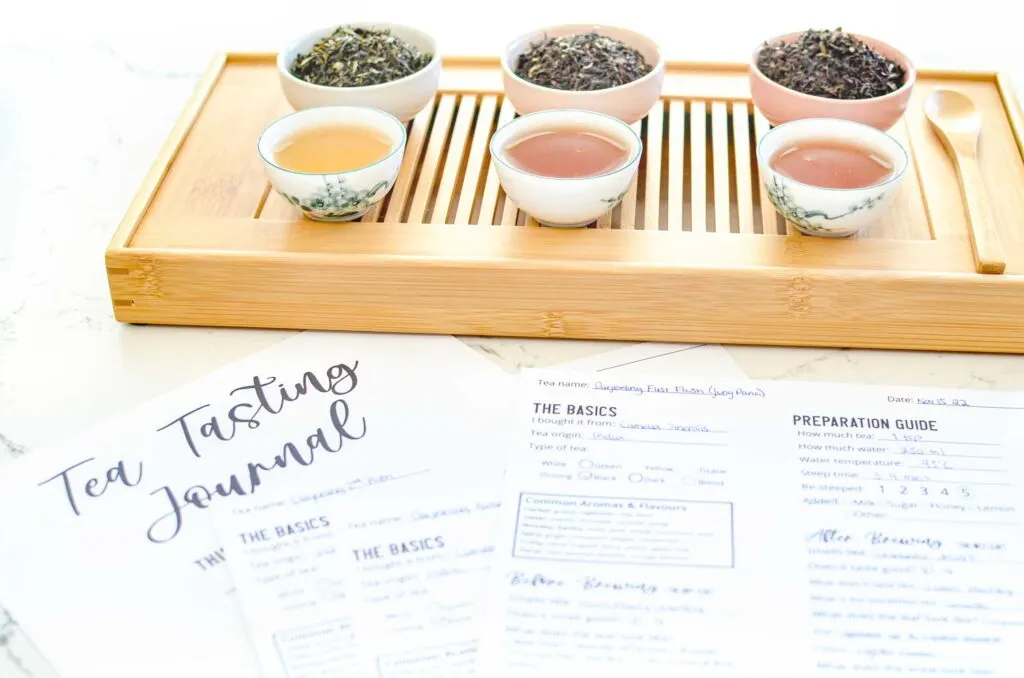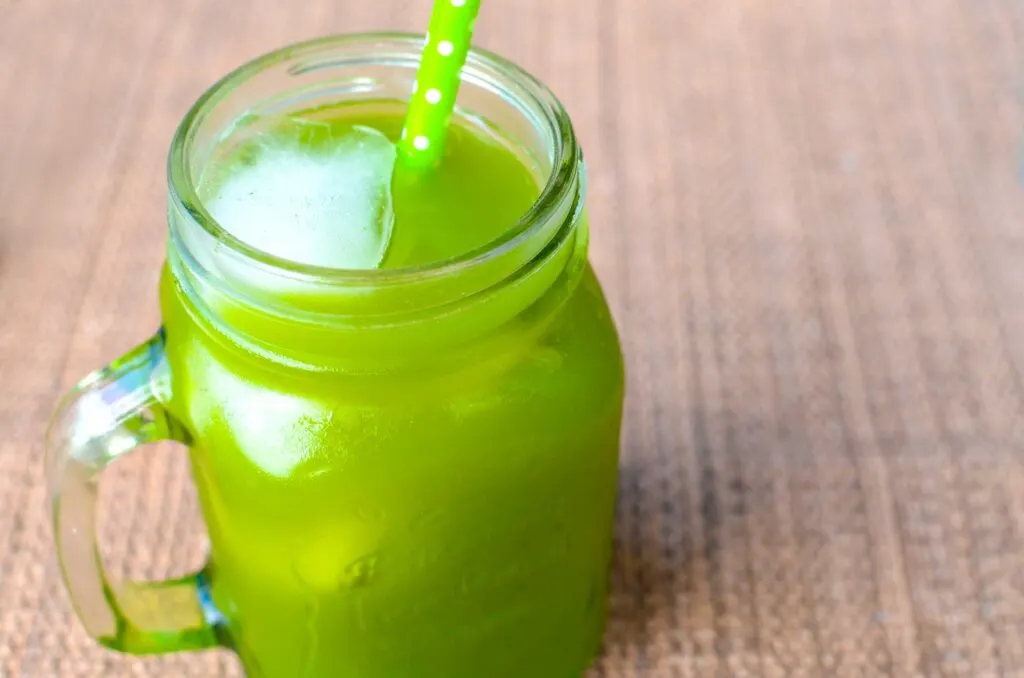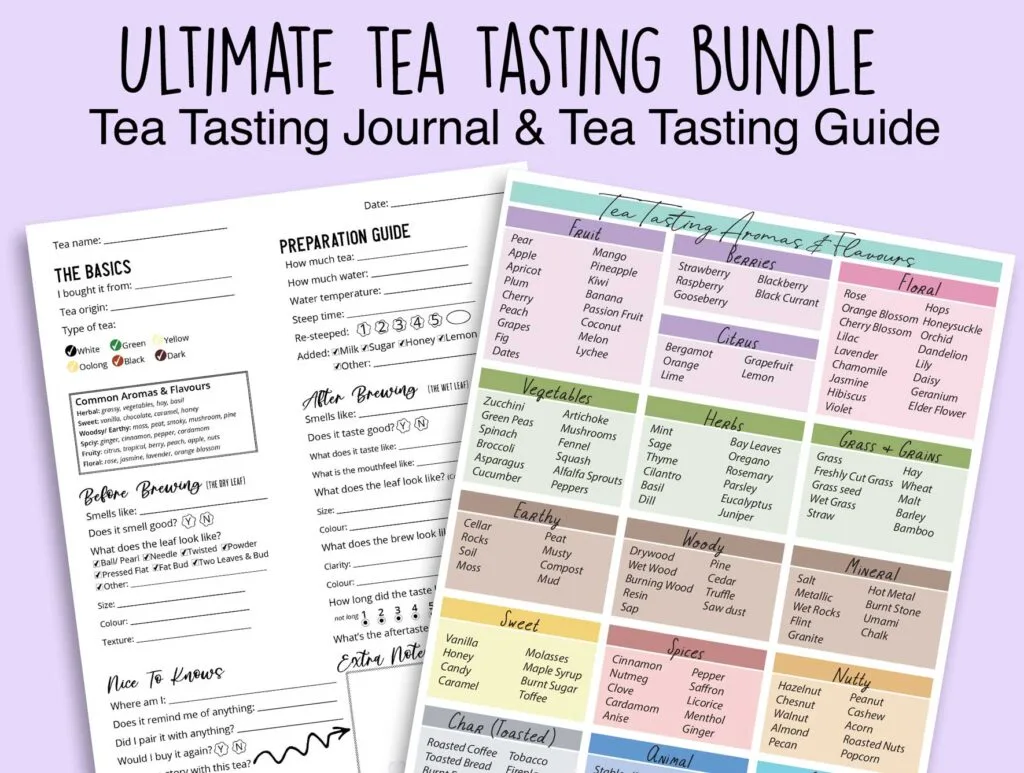There’s a huge difference between culinary and ceremonial matcha. From cost to taste, and even how they’re meant to be used.
But the types of matcha don’t stop there. There are a TON of different grades of matcha that you can buy in between the standard culinary and ceremonial.
So, what type of matcha should you buy? And is ceremonial grade matcha worth the extra cost? Continue reading to find out!
Psst! This blog post contains affiliate links in it which sends me a bit of extra money if you use them… at no extra cost to you!
Have the perfect cup of tea
An electric kettle: the Bay.com | Amazon.com
Filters or steeper: DavidsTea
Loose Leaf Tea: DavidsTea | Whittard of Chelsea | Adagio
Other posts to read
Matcha and Green Tea: Is There A Difference? | Finding The Best Matcha Green Tea Snacks
Different Types Of Matcha
It isn’t simply culinary and ceremonial grade matcha. There’s an entire spectrum of matcha qualities (which also differs between companies by the way!).
There are certain markers that will tell you where the type of matcha lies on the spectrum.
The two most popular types of matcha are culinary and ceremonial grades. But, you might have also seen Uji Matcha and Industrial grade matcha.
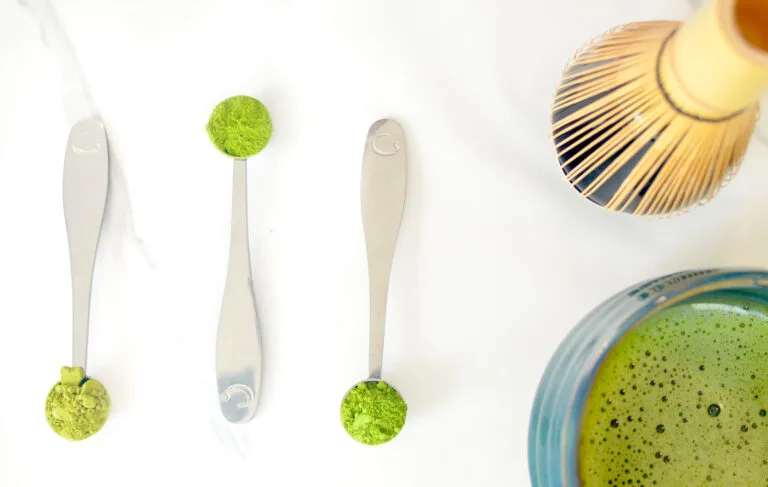
Culinary Grade Matcha
Culinary grade matcha is the lowest quality matcha you can find.
It’s meant for cooking and mixing in drinks (lattes, iced teas…etc.). It tends to be a darker, less vibrant shade of green.
Ceremonial Grade Matcha
Ceremonial grade matcha is the highest quality matcha you can find.
This is the matcha powder you should use if you want to have a traditional matcha ceremony with a chawan and chasen.
You might also be interested in reading…
Uji Matcha
Uji Matcha is referring to where the matcha powder is from.
Uji is a small city near Kyoto, Japan. But it’s known for producing some of the best matcha in Japan.
Typically, when you see that it’s Uji matcha, it should be a high quality matcha – but of course this isn’t always the case. There are of course always exceptions to the rule.
Industrial Grade Matcha
Industrial grade matcha is even new to me and that’s because it’s not really meant for tea consumption.
Industrial grade matcha has a more yellowish tone to the powder and is typically higher in acidity. You can find it being used in vitamin supplements and even face masks.
It’s used for its beneficial properties but not meant to be consumed in tea form (or anything close to that!).
You can read more about it here.
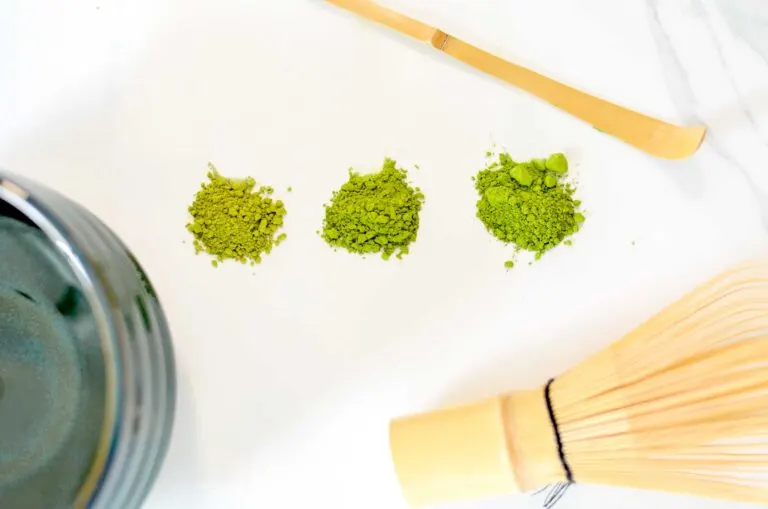
A Closer Look: The Major Differences Between Culinary And Ceremonial Matcha
Culinary and ceremonial matcha have the most noticeable differences between the price, taste, and colour.
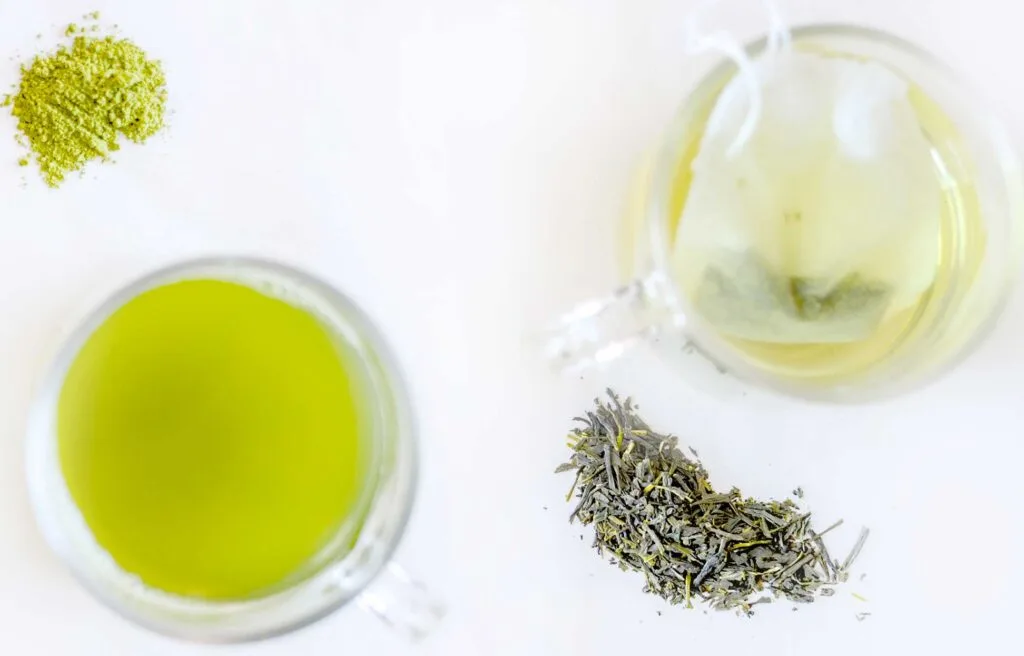
You might also be interested in reading…
The Price Of Culinary Vs. Ceremonial Matcha
This is one of the easiest variables to tell culinary and ceremonial grade matcha apart, but it can still be a bit tricky.
Matcha powder has a HUGE price range.
Typically, the higher the price, the higher the quality the matcha powder.
Culinary grade matcha powder has a huge price drop, making it a lot more affordable to buy.
Ceremonial grade matcha powder can be twice, or even three times the price as culinary grade.
Keep in mind that there are different levels of each. So you can always find a mid rage ceremonial grade to save some money, but this will affect the taste (more on taste profiles soon!).
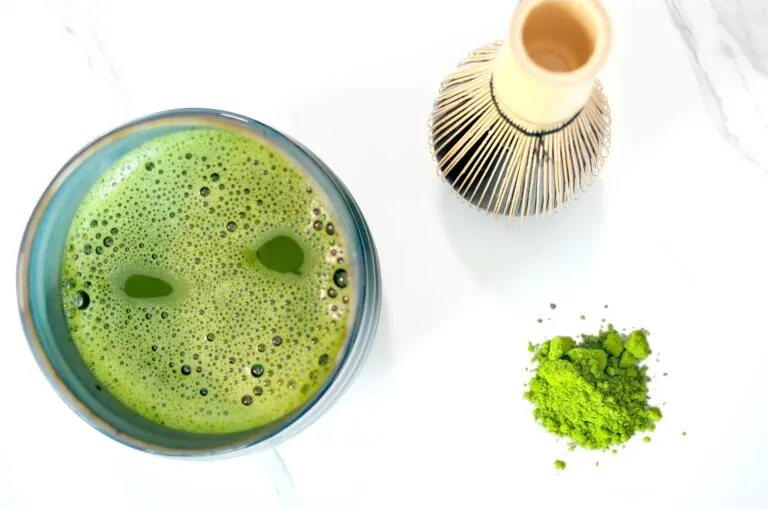
The Look: Colour & Texture Of Matcha Grades
The look between culinary and ceremonial grade matcha is very striking! You should be able to tell the grade of the matcha based on the colour and the texture of the powder.
Colour Differences Between Matcha
The colour of culinary grade matcha powder is a dulled green, resembling more of a yellow and sometimes even brown.
Ceremonial grades of matcha are bright and vibrant green.
A good rule of thumb to follow is the brighter the colour green, the better the quality of matcha it is.
Love Matcha?
Decorate your home with a downloadable & printable matcha wall art!
The Texture Differences Between Matcha
There’s also a difference between the textures of the matcha powder.
Culinary matcha will be more flat and lumpy (this is why I always recommend sifting the matcha powder first!).
Ceremonial grade is a more refined powder. This tends to make it easier to whisk and you end up with more foam.
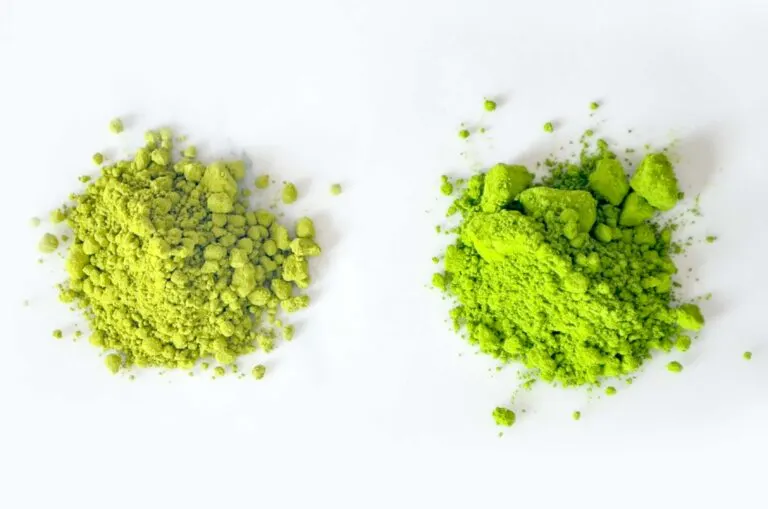
The Taste Of Different Grades Of Matcha
And finally, how do the grades of matcha differ on taste?
As you may of suspected, the taste of culinary and ceremonial grade matcha are far from the same.
Culinary grade matcha tends to be more bitter tasting, making it hard to enjoy as matcha is meant to be – plain with a small amount of water (like an espresso). Jump to see how to use culinary grade matcha here.
Ceremonial grade matcha, on the other hand, is very neutral tasting and not overpowering at all. It can have a very mild, sometimes sweet taste.
Build & Track Your Tea Journey
Refine your tea palette with my Tea Tasting Journal to record and take notes on every new tea you try.

How To Use Culinary And Ceremonial Matcha?
It may seem like ceremonial grade matcha is better than culinary grade, but that isn’t exactly the case. It all depends on what you’re using the matcha powder for.
If you’re looking to make traditional (ceremonial) matcha using a whisk, you’ll of course want to use ceremonial matcha. It’s smoother to whisk and easy to drink on its own.
Culinary grade is perfect for mixing drinks and baking. You wouldn’t want to mix your expensive ceremonial grade matcha into a latte or cake… would you? Matcha has been mixed into a lot of delicious desserts, see what Matcha treats you can buy here!
Culinary matcha isn’t just used for cooking because it’s cheaper, it’s also because the flavour is so much stronger. You wouldn’t be able to taste ceremonial grade matcha if you made anything with it, it would get lost in all the other ingredients.
What You Need To Make Ceremonial Matcha
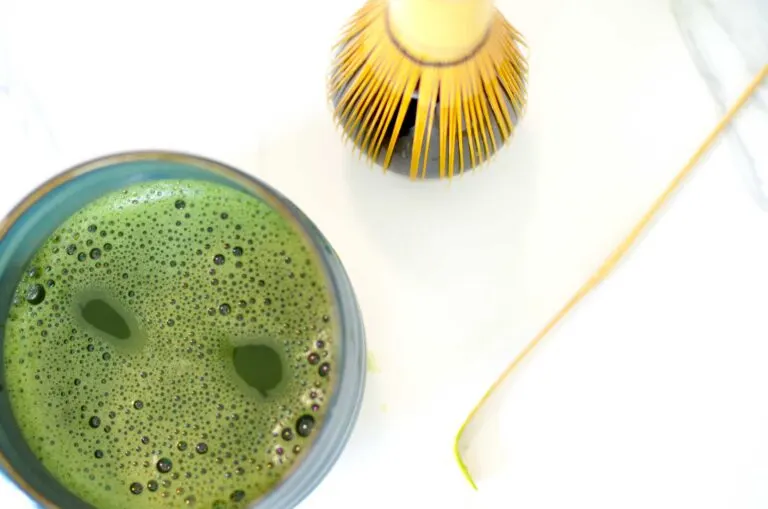
Can You Still Drink Culinary Grade Matcha?
Absolutely! In fact, I used to drink it everyday!
Culinary grade matcha just might be too bitter and strong for most people, but if you like it, no one is stopping you from whisking and drinking!
The only thing you have to watch out for is that the culinary matcha grade you’re buying is 100% matcha. Because matcha has become more popular over the years, some companies are mixing the powder with other ingredients to offset the high cost (and make it more affordable for consumers – like you!).
You might also be interested in reading…
Check Out My Iced Matcha Recipes (with Culinary Grade Matcha)!
Can You Use Ceremonial Grade For Matcha Lattes?
At the end of the day, you can do whatever you want with your matcha powder. There are two reason why you wouldn’t necessarily want to use ceremonial grade matcha in a latte though.
First, you’re paying a premium for the best quality and tasting matcha. That’s because, if you’re drinking it on it’s own, you want the best possible taste. So, when you mix it with milk and possibly a sweetener, there’s less of a point in using the best quality matcha.
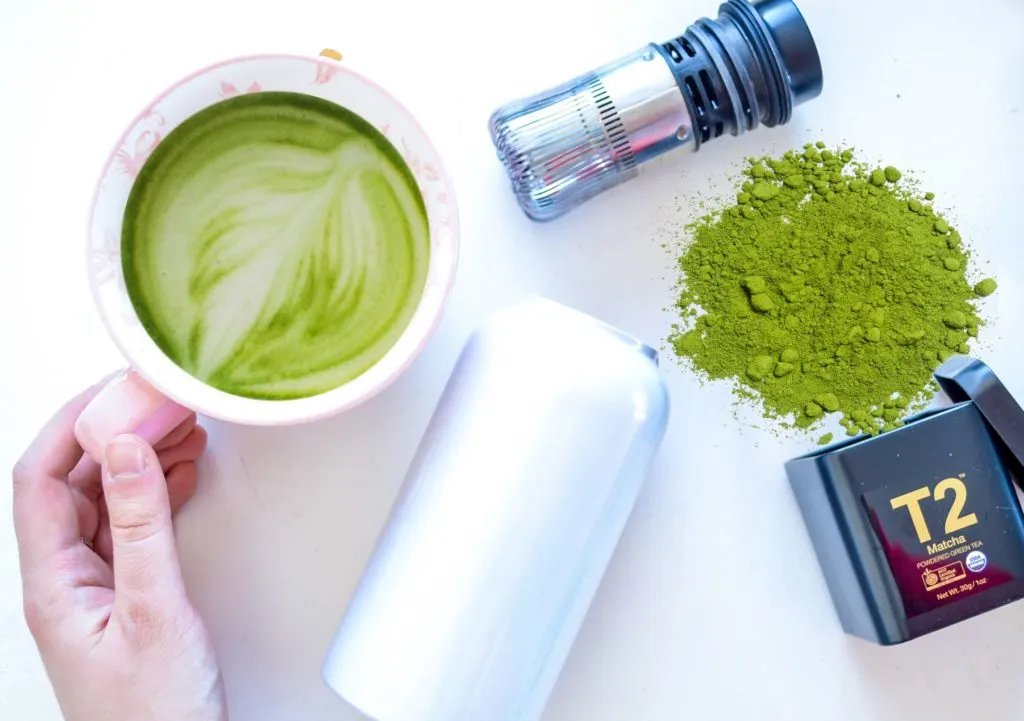
Second, culinary matcha tends to have a stronger taste which works very well for cooking and adding to lattes. When you mix it with milk, you still want to taste the matcha, and not to get lost in the background.
Is There A Difference In Terms of Health Benefits Between Culinary & Ceremonial Matcha?
Matcha already has more health benefits than green tea because it’s shade grown, and you drink the entire leaf rather than simply steeping it. You can read more about the differences between green tea and matcha here.
Even though both types of matcha are processed the same way, ceremonial grade will tend to have more health benefits than culinary grade matcha powder.
That’s because ceremonial grade matcha tends to have higher amounts of chlorophyll and L-Theanine. The higher amounts of due to using better quality leaves and harvesting at the beginning of the year only.
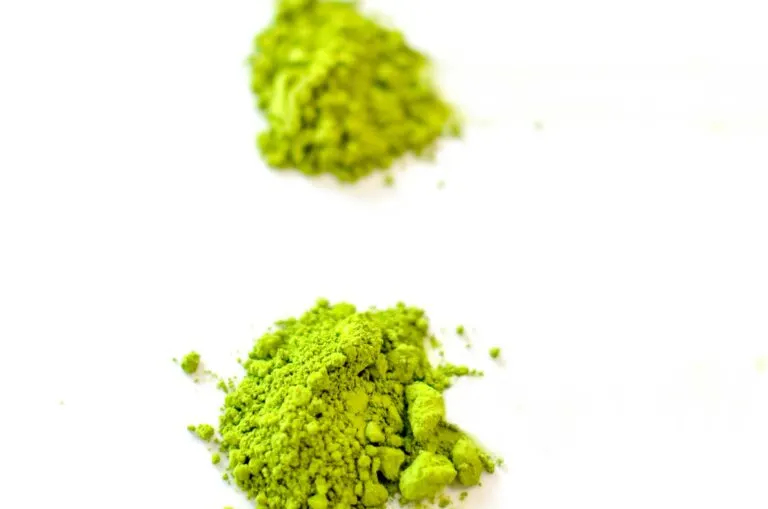
Why Are Culinary & Ceremonial Matcha So Different?
Culinary and ceremonial matcha powder should be very similar. They are both shade grown leaves that go through the same process to become powder.
So how does culinary and ceremonial grade matcha end up being so different?
Their differences are all attributed to when the leaves are harvested.
The leaves used for culinary grade matcha are harvested much later than those used for ceremonial.
Ceremonial grade matcha leaves are harvested in the early spring. At this time, only the highest quality and greenest leaves are used to make ceremonial grade matcha.

The plant will remain shaded and will be harvested a few more times between the spring and summer months. This is how you end up with the different grades of matcha in between culinary and ceremonial matcha.
Each harvest after the first is becomes more and more bitter.
The later harvests tend to be more bitter because they’ve had more chances of the sun hitting them. The sun is what removes some of the chlorophyll and turns L-Theanine into tannins, resulting in a more earthy and bitter taste, and a less vibrant green.
So the leaves from last harvest in late summer are used to make culinary grade (or even industrial) grade matcha.

Is Ceremonial Grade Matcha Worth The Higher Cost (Taste Testing!)
Ceremonial matcha can be three times the price of culinary grade matcha. For example, I can buy 50g culinary grade matcha for $15 (CAD). But for 50g of ceremonial grade matcha, it can cost $100.
So I tried three different grades of matcha all from the same company to see if ceremonial grade matcha was really worth the cost.
Where I Buy My Matcha From
I buy Matcha from Tealyra (check out their website here) because they sell a TON of different options.
So for this matcha taste test I bought their top level ceremonial grade matcha (Ogura Matcha Limited), mid level matcha (Izu Premium), and their cheapest matcha (Everyday Uji Matcha).
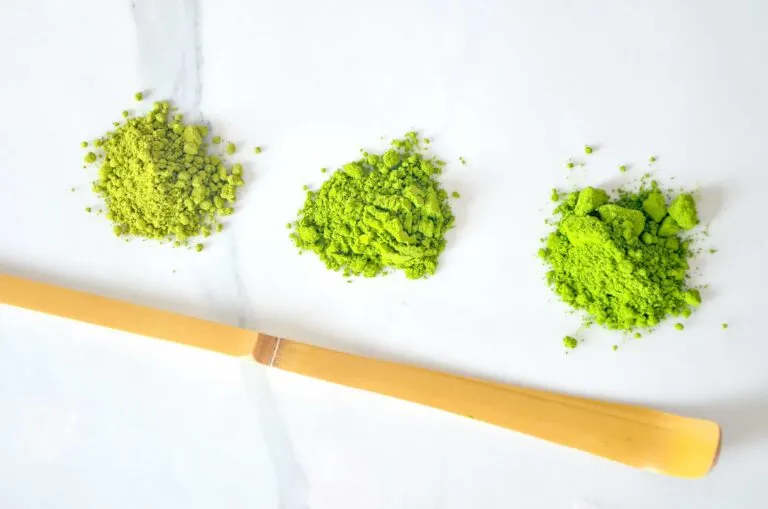
Trying Culinary Grade Matcha (Tealyra Everyday Uji Matcha)
Uji is a city in Japan, mostly known for green tea. I want to make it obvious that Uji matcha does not mean that it’s automatically culinary grade matcha. It just so happens that Uji matcha from Tealyra is their lowest grade matcha.
Tealyra does not promote this as a matcha powder that should be enjoyed on its own. Instead they recommend using it for baking and to use in lattes.
It’s honestly a great price if you want to enjoy matcha everyday. Coming in at $13 CAD for 50 g, because of that, it was my go-to matcha for a long time (especially as a student!).
Off the bat, the colour is quite unappetizing. You don’t notice it as much once it’s whisked in a coloured chawan. But it is quite a bit more yellowed-hued from the ceremonial grade matcha and lacking the vibrant green colour.
At first I needed to add some sort of sweetener to it, but eventually I became used to the bitter taste. This matcha is definitely best suited in a mixed drink though. If it’s summer time, I love using it in iced matcha drinks, see my favourite recipes here.
Interested In Tea Tasting? Get The Tea Tasting Bundle!
Refine your tea palette with my Tea Tasting Guide and take notes on every new tea you try to remember for next time in my Tea Tasting Journal.
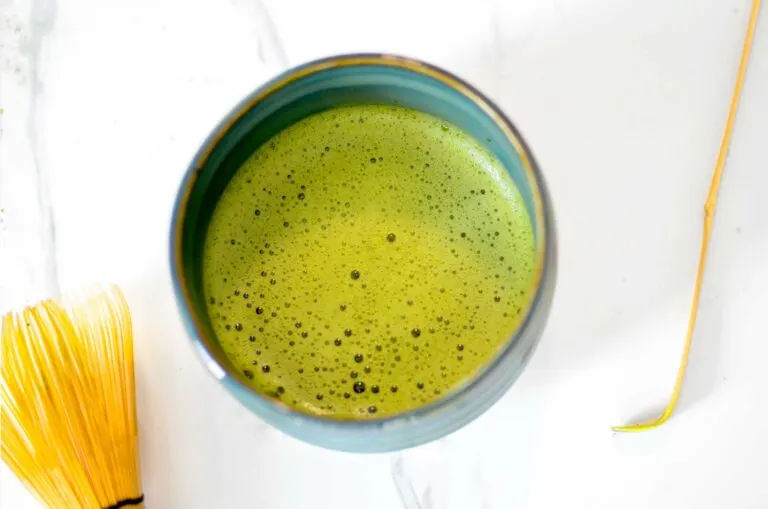
Trying Ceremonial Grade Matcha (Tealyra Ogura Matcha Limited)
This was my first time trying ceremonial grade matcha. Let me tell you, it was EXPENSIVE! I paid $50 CAD for 25g of matcha powder. Notice, they only give you 25g, whereas culinary was sold in 50g packages.
So, to buy the same amount (50g) of ceremonial grade matcha would cost $100. This is Tealyra’s highest quality ceremonial grade matcha.
Because of this, I was expected a huge boost in quality. I was actually a bit nervous to try it. I was worried that I would be hooked and wouldn’t be able to go back to the cheap stuff.
The Best Ceremonial Grade Matcha: Kyoto Dew
If you’re looking to try the best ceremonial grade matcha on the market right now, Kyoto Dew is the one for you. It was voted best matcha in 2019, 2020, and 2021!
Buy it on Amazon here.
I was shocked when I tried it! Their Ogura ceremonial matcha was almost too bland for me. Of course, I had to add honey to the Uji matcha to offset the bitterness whereas here I didn’t need to add anything.
It was very enjoyable to drink plain but I almost needed a bit more flavour! I’ll admit though, the colour of the Ogura matcha is unbeatable.

Trying Something In The Middle (Tealyra Izu Premium Matcha)
Izu premium matcha is the cheapest matcha from Tealyra that they say you can enjoy on its’ own (not in a latte). It seems like an in between culinary and ceremonial grade matcha. It can be use for either traditional whisking or culinary purposes.
It’s just a bit pricer than their Everyday Uji Matcha at $18 for 50g. But in this case, the extra $5 was really worth the cost in my mind.
You can tell that the taste is stronger and more bitter than the Ogura matcha but the color was actually a very similar vibrant green.
It’s a really good middle ground. I actually prefer it because it isn’t in your face bitter but it also still tastes more like a mild green tea. It had a slight bitterness, but not too much that I needed to add a sweetener.
It was also for some reason the smoothest out of the powders (the least clumps) so it was the easiest to whisk. Plus, you can’t really go wrong with that price!
Shop Izu Premium Matcha
- A REAL MATCHA GREEN TEA FROM JAPAN. Tealyra grade matcha green tea powder is made of tea leaves of…
- EXTREMELY NUTRITIOUS FOR YOUR BODY. Matcha unsweetened green tea powder is one of the most…
- LIKE GREEN TEA? TRY MATCHA! Organically grown premium matcha green tea powder is a natural energetic…
- ALWAYS THE FRESHEST TEA. Tealyra matcha green 4 oz loose tea powder is made of the freshest tea…
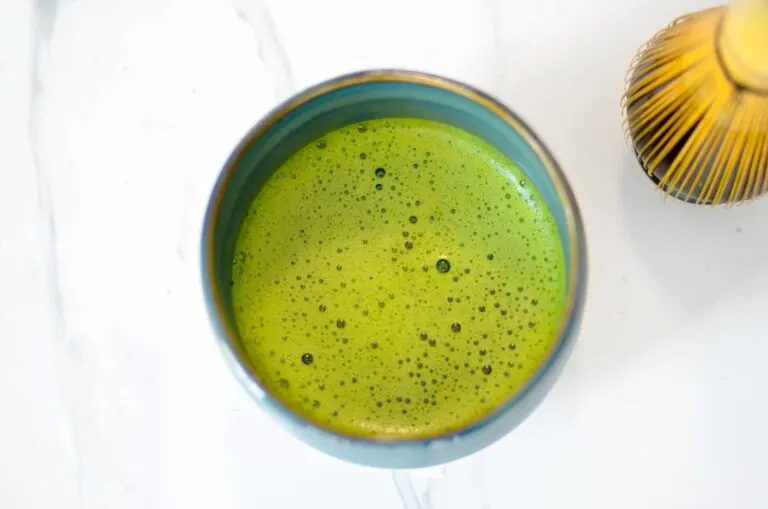
Guide To Buying Matcha Powder
Buying matcha powder can be a tad stressful, especially if you’re just starting out drinking this type of tea.
What you do want to look for when buying matcha is that it’s organic. Because you’re ingesting the entire leaf, you want to make sure you aren’t ingesting anything you shouldn’t be.
P.S. Are you new at matcha? Check out my beginners guide to matcha!

Where To Buy Matcha Powder: My Go-To Tealyra
I love buying matcha from Tealyra. First, they’re a Canadian company from MONTREAL! (But they also ship to the U.S.).
Why I really love them is for their abundance of matcha options. I feel like they give you total control over choosing the perfect quality for yourself based on how much you’re comfortable spending.
You can decide how much you want to spend and get a matcha powder your price range!
Find Tealyra Matcha on Amazon

How Do You Know If You’re Buying Culinary Or Ceremonial Grade Matcha Powder?
It will most likely say if it is culinary or ceremonial grade matcha powder on the label.
If it doesn’t specifically say culinary grade, the label might tell you what it can be used for instead (i.e. for drinking, lattes, or baking!). Once it says baking, you’re most likely getting a culinary grade
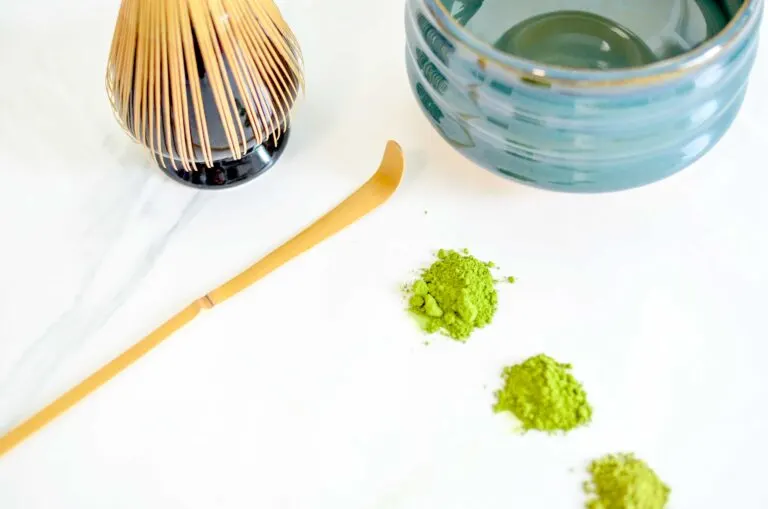
Why Is Matcha Always Sold In Such Small Quantities?
Matcha comes from green tea leaves which aren’t oxidized (don’t know what that means? Read my guide to the different types of tea!).
Basically, that means that it hasn’t come in contact with air. The oxidization process was stopped immediately once the leaves were plucked from the bus.
What that means for you is that Matcha is meant to be enjoyed as fresh as possible (same with green tea, it has one of the shorter shelf lives for tea).
So because of the shorter shelf life, you don’t want to be buying large quantities of matcha powder. You won’t be able to finish a bulk package before it looses some freshness.
How To Store Matcha For Maximum Freshness?
You want to store matcha in an air tight container. Also preferably in a dark space. Light and air are your enemies here!
I like this container on Amazon because it comes with a built in sifter (also a necessity when making matcha to avoid clumps!).
See more of my favourite ways to store tea here.
No products found.
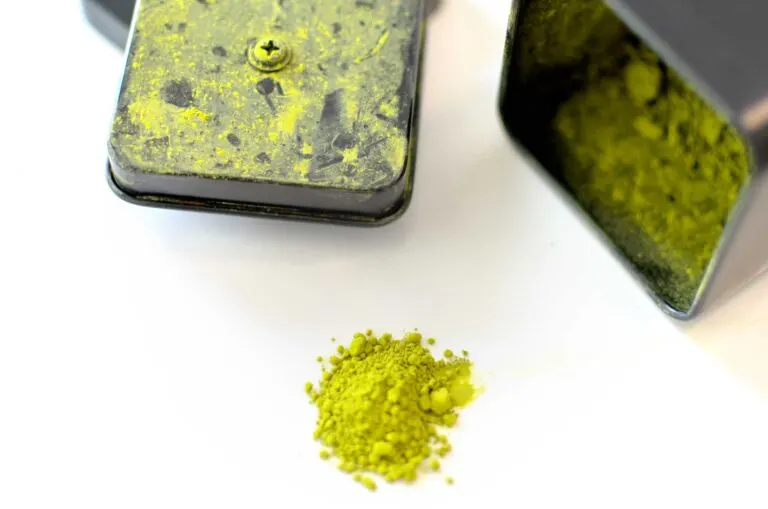
Shop Matcha Powder!
Middle Ground Matcha
Ceremonial Grade Matcha
Read More Guides
- Go Back To The Matcha Basics
- Matcha vs. Green Tea: Is There A Difference?
- Alternatives To Using A Bamboo Whisk
- Best Matcha Flavoured Snacks You’ll Want To Try (& Avoid)
- Summer Matcha Recipes You’ll Love!
Click Image To Share Or Save For Later!
Last update on 2024-04-18 / Affiliate links / Images from Amazon Product Advertising API

